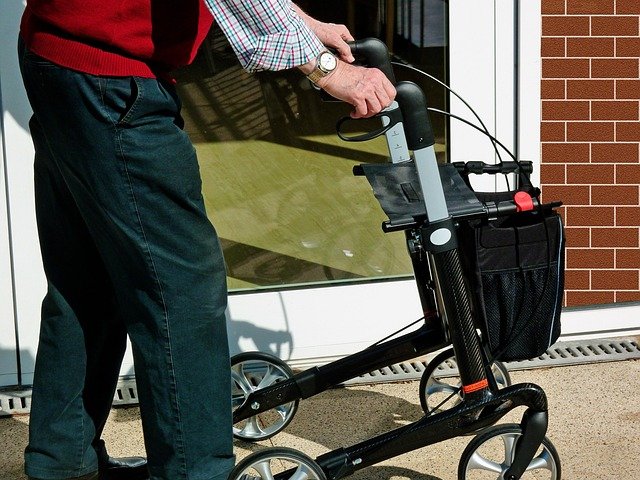A Comprehensive Guide to Finding the Right One-Bedroom Apartment for Seniors
Finding the right senior apartment involves more than square footage—it’s about comfort, safety, and compatibility with changing needs. This guide explores how older adults assess one-bedroom options by evaluating accessibility, appliances, emergency features, and support services. It also looks at how affordability, community offerings, and housing programs influence decision-making for many.

Finding suitable housing for seniors requires careful consideration of numerous factors, from location and accessibility to cost and available amenities. One-bedroom apartments offer an ideal balance of space and manageability for many older adults looking to downsize while maintaining independence. This guide explores the essential aspects of securing appropriate senior housing, including financial assistance options, community features, and important considerations for aging in place.
Understanding Senior Housing Options
Senior housing encompasses various living arrangements designed specifically for older adults. One-bedroom apartments for seniors may exist within different categories of housing, each offering distinct levels of service and independence. Independent living communities provide private apartments with minimal assistance, while assisted living facilities offer more comprehensive support services. Some seniors prefer age-restricted apartment communities that maintain an active lifestyle without healthcare services. Continuing Care Retirement Communities (CCRCs) offer a spectrum of care options within one campus, allowing residents to transition between levels of care as needs change.
Navigating Affordable Senior Apartments
Cost remains a primary concern for many seniors living on fixed incomes. Affordable senior apartments are available through various programs and initiatives. Many developers partner with government agencies to create income-restricted senior housing with reduced rents. To qualify for affordable senior apartments, applicants typically need to meet age requirements (usually 55 or 62+) and income restrictions, which vary by location and program. Some affordable communities maintain waiting lists, so early application is advisable. Non-profit organizations also develop and manage affordable senior housing options that may offer additional community services and amenities despite lower rental costs.
Exploring HUD Housing for Seniors
The U.S. Department of Housing and Urban Development (HUD) administers several programs specifically designed to help seniors secure affordable housing. Section 202 Supportive Housing for the Elderly provides housing with supportive services exclusively for very low-income seniors. The Housing Choice Voucher Program (Section 8) allows qualifying seniors to rent apartments in the private market while paying only 30% of their adjusted income toward rent, with the voucher covering the remainder. Public Housing operated by local housing authorities offers reduced-rent apartments for eligible low-income seniors. HUD-subsidized apartments are typically well-maintained and may include utilities in the rental cost, though availability varies significantly by location [1].
Evaluating Assisted Living Costs
For seniors requiring some level of daily assistance, assisted living communities offer one-bedroom apartments with supportive services. Understanding assisted living costs is crucial for financial planning. Monthly fees typically include rent, utilities, meals, housekeeping, transportation, and basic care services. Additional care services often incur extra charges based on the level of assistance needed. Many assisted living communities operate on a tiered pricing model, with costs increasing as care needs intensify.
Accessing Senior Housing Assistance Programs
Numerous assistance programs exist to help seniors afford suitable housing. State-specific programs may provide rental assistance or housing vouchers targeted to seniors. Area Agencies on Aging can connect seniors with local housing resources and application assistance. Some nonprofit organizations offer housing subsidies or maintain their own affordable senior communities. Veterans and their surviving spouses may qualify for VA housing grants or the Aid and Attendance benefit to help with housing costs. Property tax relief programs in many states can reduce the tax burden for senior homeowners, making it more affordable to age in place.
Comparing Senior Housing Options and Costs
When evaluating senior housing options, comparing costs and features helps ensure the best value for your specific needs. Below is a comparison of typical senior housing arrangements and their associated costs:
| Housing Type | Average Monthly Cost | What’s Included | Eligibility Requirements |
|---|---|---|---|
| Independent Living | $1,500 - $4,000 | Housing, maintenance, activities, some meals | Age 55+ or 62+, generally no income limits |
| HUD Section 202 | 30% of income | Housing, utilities, maintenance | Age 62+, very low income |
| Low-Income Tax Credit Apartments | $400 - $1,200 | Housing, maintenance | Age varies, income typically below 60% of area median |
| Assisted Living | $3,000 - $6,000 | Housing, meals, care services, activities | Age varies, often needs assessment required |
| CCRC (One-Bedroom) | $3,000 - $5,000 plus entrance fee | Housing, meals, activities, access to care continuum | Age 62+, entrance fee ($100,000-$500,000) |
Prices, rates, or cost estimates mentioned in this article are based on the latest available information but may change over time. Independent research is advised before making financial decisions.
Essential Features to Consider in Senior Apartments
Beyond cost, certain features are particularly important when selecting a one-bedroom apartment for seniors. Accessibility features like no-step entries, wider doorways, grab bars, and walk-in showers can significantly impact daily living. Location considerations should include proximity to healthcare facilities, grocery stores, pharmacies, and family members. Community amenities like transportation services, dining options, fitness centers, and social activities contribute to quality of life. Security features such as controlled entry, emergency call systems, and on-site staff provide peace of mind. Some communities offer additional services like housekeeping, laundry assistance, and medication management that can be valuable as needs change over time.
Selecting the right one-bedroom apartment involves balancing numerous factors including location, cost, amenities, and available support services. By researching options thoroughly and understanding available assistance programs, seniors can find housing solutions that enhance their quality of life while meeting their financial and personal needs. Whether choosing independent living, affordable senior housing, or assisted living, the goal remains finding a comfortable, manageable space that supports dignity, independence, and well-being throughout the aging process.




